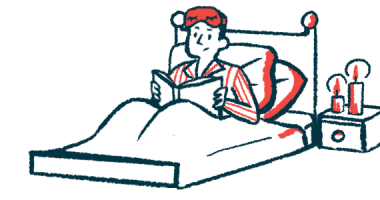Virginia Venture Partners Invests in OxiWear Device for PH
The wearable device was developed in 2019 to combat hypoxia complications

Virginia Venture Partners — Virginia Innovation Partnership Corporation (VIPC)’s equity investment program — is investing in OxiWear and its modern ear-wearable device that’s designed to continuously monitor blood oxygen levels in people with pulmonary hypertension (PH).
The OxiWear device alerts the user through a phone app when there’s an unsafe drop in oxygen levels. By hitting one button, users can rapidly reach the medical assistance they need, decreasing the wait time for treatment.
“The OxiWear device empowers those with pulmonary hypertension to lead normal lives and avoid serious medical consequences,” Tom Weithman, Virginia Venture Partners’ managing director and VIPC’s chief investment officer, said in a corporation press release.
This marks the third investment of VIPC, previously known as the Center for Innovative Technology, on OxiWear. The first two were made through its GAP Funds early-stage equity investment program. Equity investment programs invest in a company by purchasing its shares in the stock market.
VIPC’s investment program supports companies with a high potential to reach rapid growth and generate an economic return to interested parties, including entrepreneurs and co-investors. The goal of VIPC is to help the economy of Virginia expand and diversify.
“We are extremely grateful for the ongoing support of VIPC’s Virginia Venture Partners to help continue our growth and innovation,” Shavini Fernando, OxiWear’s founder and CEO, said.
Fernando is a virtual reality/video game and web designer with PH due to Eisenmenger syndrome, a heart defect that causes irregular blood flow from the heart to the lungs.
He developed OxiWear in 2019 to prevent the dangerous complications of silent hypoxia, low blood oxygen levels without noticeable symptoms, that can occur in people with PH and increase their risk of heart failure.
OxiWear can monitor blood oxygen levels on a phone app, alerting users if they drop below the user-defined safe threshold. In the case of severe drops, an emergency call can be made by clicking a button and text alerts can be sent to emergency contacts.
“I have personally endured what is like to live with pulmonary hypertension, and have experienced the dangerous complications of silent hypoxia,” Fernando said, noting he “developed OxiWear as a tool to help others reduce the stress of this disease and lead fuller lives.”
OxiWear may also be used for people at risk of silent hypoxia due to high cardio activities, high altitude, and medical conditions such as chronic obstructive pulmonary disease and COVID-19.
“We are excited to contribute to [OxiWear’s] success and see the continued impact they make in the healthcare industry,” Weithman said.








